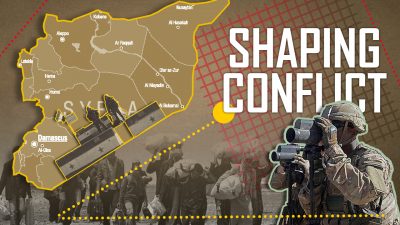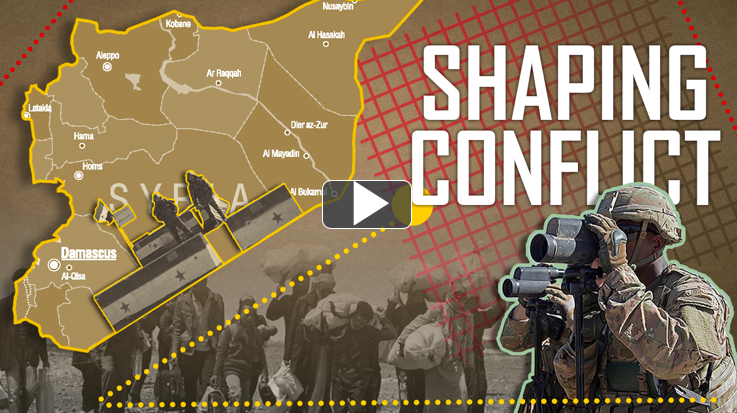Video: How Russian-Turkish ‘Safe Zone’ Deal Shapes Course of Syrian Conflict

The military crisis in northeastern Syria started by the Turkish military offensive on Kurdish militias amid the US troops withdrawal deflated.
On October 23, Turkey, Russia and Syria started implementing the ‘safe zone’ agreement reached by Turkish President Recep Tayyip Erdogan and Russian President Vladimir Putin a day earlier. Units of the Russian Military Police deployed in the border town of Kobani. According to the Russian Defense Ministry, the Syrian Army will establish a total of 15 observation posts on the Turkish-Syrian border to the east of the Euphrates. The next steps are the withdrawal of Kurdish YPG units and their heavy weapons from the agreed buffer zone and the start of joint Russian-Turkish patrols.
Meanwhile, the Turkish Defense Ministry announced that Operation Peace Spring in northeastern Syria does not need to be expanded and that there is no need to carry out any new operations because the main goals had been achieved. Turkish sources say that some YPG fighters, that they call “terrorists”, may remain in the area, but do not expect large-scale military actions. Members of the Turkish-backed coalition of militant groups, the Syrian National Army, remain in the captured areas between Tell Abyad and Ras al-Ayn.
The Iranian Foreign Ministry described the Russian-Turkish agreement as a positive move to reach a stability in Syria. The ministry recalled that Iran has always supported political measures to settle the conflict.
The United States, that are finalizing the main phase of the troops withdrawal, also seem to be satisfied with the outcome of the situation. During an October 23 press conference, President Donald Trump took a credit for the de-escalation in northeastern Syria, praised the ceasefire and announced that his administration was removing sanctions imposed on Turkey in response to its military action against Kurdish forces. The US President also confirmed that a “small number” of US troops would remain in the area “where they have the oil.”
Actions of Syria, the United States, Russia and Turkey demonstrate that all the key sides of the conflict accept the deal over northeastern Syria and move forward in the direction of a possible political settlement. The separatist faction within the Kurdish political and armed groups of northern Syria suffered a major blow. The only side unhappy with the outcome is Israel that strongly condemned Turkey’s actions and publicly supported the Kurdish separatism in Syria and Iraq as a tool against its never-ending campaign against the expanding Iranian influence. The US military presence in the al-Tanf border area is likely a goodwill gesture of Trump to his Israeli partners.
In the current conditions, the Kurdish-led Syrian Democratic Forces, and therefore Kurdish militias and political factions, have the only option – to be reintegrated into the modern Syria. Moscow already warned them that if they decline to fulfil the safe-zone deal the Russians and the Syrian Army will have to open a way for the Turkish military machine that will crush them.
The YPG-led partisan war against the Damascus government and attempts to push the Syrian Army back from the provinces of Raqqah and Hasakah by military means is unlikely scenario. If the Kurdish leaders attempt to play this scenario, a vast majority of the Syrians, including the so-called ‘moderate opposition’, will consider them to be a bigger threat than ever ISIS.
In the coming months the situation in northern Syria will remain mostly stable. However, after the 2019-2020 winter, it’s expected that factions affiliated with the Kurdish People’s Protection Units (YPG) and the Kurdistan Workers Party (PKK) will step up terrorist activity in northern Syria, mainly the area of Afrin, and Kurdish-populated parts of Turkey Southeastern and Eastern Anatolia Regions. Big Turkish cities, like Ankara, Istanbul, Izmir and Gaziantep, may also become places of strident PKK attacks. The main targets will be personnel and facilities affiliated with the Army, the Gendarmerie General Command and Police. However, even in the event of success, such kind of activity will not force the Erdogan government to make cardinal changes in its policies towards Syria and the PKK-linked groups.
Another point of possible instability is Greater Idlib, where al-Qaeda affiliated militant groups still present along with the Turkish-backed ‘opposition’. The Damascus government and its allies repeatedly stated that the Idlib de-escalation agreement does not include terrorists. So, Ankara will have to neutralize them in its zone of responsibility or the Syrian Army will come to do so, like it was done in northern Hama in August.
*
Note to readers: please click the share buttons above or below. Forward this article to your email lists. Crosspost on your blog site, internet forums. etc.
We call upon Global Research readers to support South Front in its endeavors.
If you’re able, and if you like our content and approach, please support the project. Our work wouldn’t be possible without your help: PayPal: [email protected] or via: http://southfront.org/donate/ or via: https://www.patreon.com/southfront


